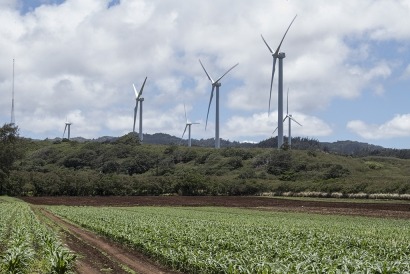
“Wind energy prices – particularly in the central United States – remain attractive even with ongoing supply chain and inflationary pressures,” said Ryan Wiser, a senior scientist in Berkeley Lab’s Energy Technologies Area.
“Considering the health and climate benefits of wind energy makes the economics even better. Wind energy prices – particularly in the central United States – remain attractive even with ongoing supply chain and inflationary pressures," he added.
Though 2022 was a relatively slow year for new wind power deployment, the Inflation Reduction Act promises new market dynamics in the years ahead. Key findings from DOE’s annual “Land-Based Wind Market Report” include the following:
• Wind comprises a growing share of electricity. U.S. wind power deployment totaled 8.5 gigawatts (GW) in 2022, representing a $12 billion investment. Wind energy contributed more than 10% of the nation’s electricity supply, and as much as 38% in the Southwest Power Pool. A record-high 300 GW of wind is seeking transmission interconnection.
• Wind turbines continue to get larger as technology advances. Improved plant performance over the last decades has been driven by larger turbines mounted on taller towers and featuring longer blades. In 2012, only 1% of turbines employed rotors that were 115 meters in diameter or larger, while 98% of newly installed turbines featured such rotors in 2022. Proposed projects indicate that total turbine height will continue to rise.

• Wind energy prices have risen, but remain attractive for purchasers. Wind power purchase agreement prices have been drifting higher since about 2018, with a recent range from below $20/MWh to more than $40/MWh depending on region and other details. These prices, which are possible in part due to federal tax support, are similar to recent solar sales prices and to the projected future fuel costs of gas-fired generation.
• The grid-system value of wind surged in 2022 across many markets. The value of wind sold in wholesale power markets is affected by the location of wind plants, their hourly output profiles, and how those characteristics correlate with real-time electricity prices and capacity markets. The market value of wind generally increased in 2022, driven higher by high natural gas and wholesale power prices. The highest wind values were in New England and California (above $75/MWh), with the lowest values in the Southwest Power Pool ($18/MWh).
• The average levelized cost of wind energy was $32/MWh. Levelized costs vary across time and geography. The national average stood at $32/MWh for wind plants built in 2022, driven lower by the concentration of new wind projects in the nation’s lowest-cost wind regions: Texas and the central part of the country. (Cost estimates do not count the effect of federal tax incentives for wind.)
• The health and climate benefits of wind in 2022 far exceeded the levelized cost of wind. Wind generation reduces power-sector emissions of carbon dioxide, nitrogen oxides, and sulfur dioxide. These reductions, in turn, provide public health and climate benefits that vary regionally, but together are economically valued at an average of $135/MWh in 2022.
• The domestic supply chain began 2022 in decline, but passage of the Inflation Reduction Act created renewed optimism. Though domestic manufacturing of towers and nacelles was strong in 2022, blade manufacturing has plummeted in recent years. The Inflation Reduction Act contains, for the first time, production-based tax credits for domestic manufacturing of key wind components like nacelles, towers, and blades; it also extends the tax credit for wind deployment, inclusive of a new 10% bonus for projects that meet domestic content requirements. Consequently, there have been at least eleven announcements of manufacturing facilities that plan to open, re-open, or expand to serve the land-based wind industry.
• Energy analysts project growing wind deployment, spurred by incentives in the Inflation Reduction Act. The Inflation Reduction Act provides a long-term extension of tax credits for wind energy along with opportunities for wind plants to earn two 10 percent bonus credits. The average wind deployment forecast for 2026 among analysts is 18 GW, a significant increase from the 11 GW 2026 forecast from a year ago (before the Inflation Reduction Act).
Berkeley Lab’s contributions to this report were funded by the U.S. Department of Energy’s Wind Energy Technologies Office.

